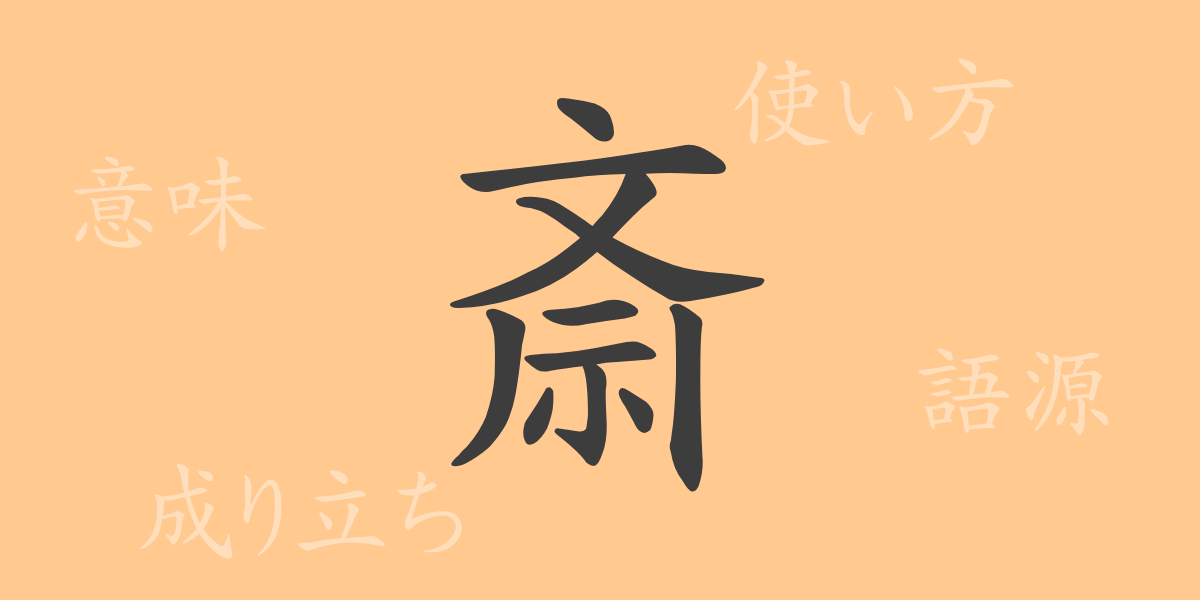Among the many kanji used in Japanese writing, “斎” (sai) is particularly meaningful and culturally significant. This article delves deeply into the origins, meanings, usages, readings, stroke count, radical, and idioms or phrases using “斎” (sai). For those interested in Japanese traditions and culture, or those who wish to understand the profound nature of kanji, this article will be a source of new discoveries.
Etymology of 斎 (sai)
The character “斎” (sai) can be traced back to the Shang Dynasty in ancient China, from where it developed as a kanji. Originally, it meant to purify oneself for a ritual, referring to a special room or facility used for this purpose. In Japan, with the introduction of Buddhism, this kanji was adopted to signify religious purity. It also came to be used in concepts related to time, such as “斎日” (saijitsu), which means a fixed time for performing rituals.
Meanings and Usages of 斎 (sai)
The kanji “斎” (sai) primarily means “to purify,” “pure,” or “to abstain.” It refers to acts of purifying oneself for religious ceremonies and observing dietary restrictions to elevate one’s spirituality. In modern usage, it appears in contexts such as “断食” (danjiki, fasting) and “禁斎” (kinsai, temporary abstention). Additionally, it is used in names and facilities, such as “斎場” (saijō, funeral hall).
Reading, Stroke Count, and Radical of 斎 (sai)
The kanji “斎” (sai) has interesting characteristics in its readings and structure.
- Reading: In the on’yomi reading, it is “サイ” (sai), and in the kun’yomi reading, it is “いむ” (imu), “いわい” (iwai), and “とき” (toki).
- Stroke count: The kanji “斎” (sai) consists of 17 strokes.
- Radical: The radical is “斉” (sei), but “斎” (sai) itself functions as a radical in other kanji.
Idioms, Phrases, and Proverbs Using 斎 (sai) and Their Meanings
Idioms and phrases that include “斎” (sai) reflect its inherent meanings.
- 斎藤 (サイトウ, Saitō): A common Japanese surname derived from a place where purification rituals were conducted, associated with the Fujiwara clan.
- 斎行 (サイギョウ, saigyō): Conducting a ceremony or ritual.
- 粛斎 (シュクサイ, shukusai): To purify oneself and straighten one’s mind.
- 無斎 (ムサイ, musai): Not performing purification; also means unadorned or plain.
Conclusion on 斎 (sai)
The deep meanings and history contained in a single kanji like “斎” (sai) symbolize the depth of the Japanese language. Despite its simple appearance, “斎” (sai) encompasses a wide range of cultural backgrounds and usages. Through this article, you have gained a deeper understanding of the cultural significance and roles of “斎” (sai) in Japanese life. By continuing to explore the stories behind each kanji, the journey of discovering the charms of the Japanese language will persist.

























